Workers and their families from the fast-growing industrial towns and cities on both sides of the Penines arrived by train, and even by bicycle, to enjoy the fresh, clean air. And it was a short trip from the popular Georgian spa town of Buxton for those who had come to take the therapeutic waters.
So it’s no surprise that the families living in Goyt’s Bridge earned some extra money by providing tea and refreshments to the many visitors. Gerald Hancock in his ‘Goyt Valley Romance’ describes the scene in his usual eloquent style:
It was the meeting of the waters, with the River Goyt, the stream from Shooters Clough and Wildmoorstone brook. Crystal clear waters which could quickly rise in downpours from the moors above, but become tranquil, dancing and sparkling over smooth gritstone rocks.
River banks and hedgerows that supported those first tender leafed flowers of spring, and those bursting summer blooms in proud cottage gardens.
Victorian visitors travelled many miles in their horsedrawn carriages, not just to see the wonderful Goyt Valley in summer, but to admire and enjoy the gardens with their variety and beauty. Then to take tea in one of the welcoming tea rooms, such was the reputation of Goyt’s Bridge.
Little wonder now that people regarded it a special magical place, and a privilege to have been a visitor in a truly rainbow’s end.
Finding the tea rooms
I think there must have been two tea rooms in Goyt’s Bridge – one beside Goytshead Farm and the other close to Goytsbridge Farm (see map above). There was also as a small hut selling sweets and ice creams.
Most of the photos I’ve seen are of the tea room next to Goytshead Farm (see photo at the top of the page). This had a garden terrace and must have enjoyed wonderful views down to the packhorse bridge and the stepping stones over the Goyt.
The other tea room was at the foot of Sandy Lane – also known as Goyt’s Lane or Old Goyt’s Lane. Gerald says;
Another well known name was that of Tom Coward who lived at the bottom of Sandy Lane, at the farm and tea rooms there. He was employed as coachman about the year 1899 to the Grimshawe family. Delicious cream teas were served here which some older visitors may wistfully remember.
Goyt’s Lane / Sandy Lane led down from the Buxton to Whaley Bridge ‘Long Hill’ road all the way into the hamlet of Goyt’s Bridge. The lower section was diverted along the Bunsall Incline when the old railway track was tarmacked in 1967.
Today this abandoned lower section of the old road makes an attractive walk (see walk 10), vanishing into the waters of Errwood Reservoir. But before the valley was flooded, it led to Goytsbridge Farm.
Joe Hewitt was manager of Castedge coal mine. He had struggled to make ends meet as coal became increasingly difficult to extract. So when Goytsbridge Farm became available, he was able to move in and supplement his income by selling both teas and ice cream. Gerald explains:
The Hewitts lived later at the tea rooms at the bottom of Sandy Lane, still working the coal mine. Joe [Jack’s son], had a little hut near the Goyt’s Bridge, and in summertime sold sweets, drinks and ice cream.
To make the ice cream he had to carry huge blocks of ice from Buxton on the pillion of his motorcycle. Many was the time that sister Brenda [Jack’s sister] had a lift on the ice from Buxton to save the long walk home. “Ice cream”, she said, “always left her with a lasting impression!”.
It seems to say ‘T B. HIBBERT. GOYT BRIDGE FARM. TEAS & PARTIES.’ And then another word I can’t decipher.
But the arrow seems to point to the right. And that’s Goytshead Farm – not Goytsbridge Farm. So have I got my maps mixed up? Or could the sign read GOYT HEAD FARM?
If anyone can help, please get in touch or leave a comment below.

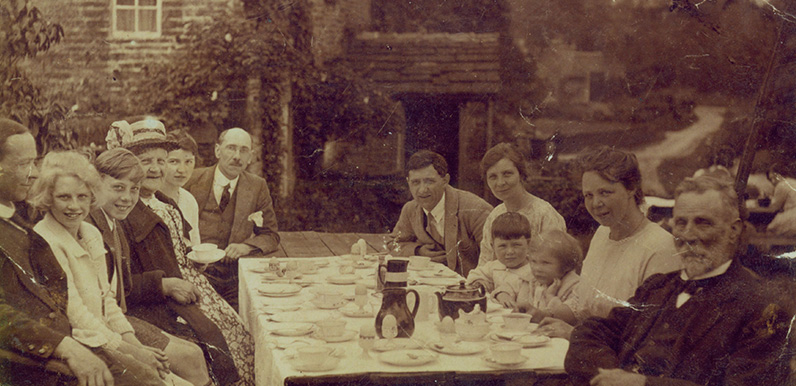
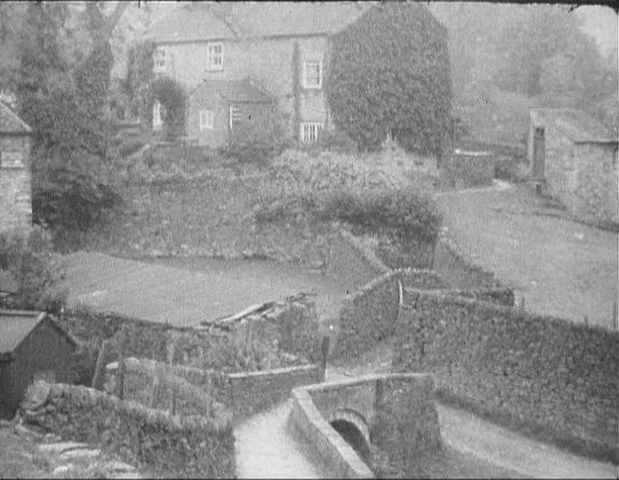
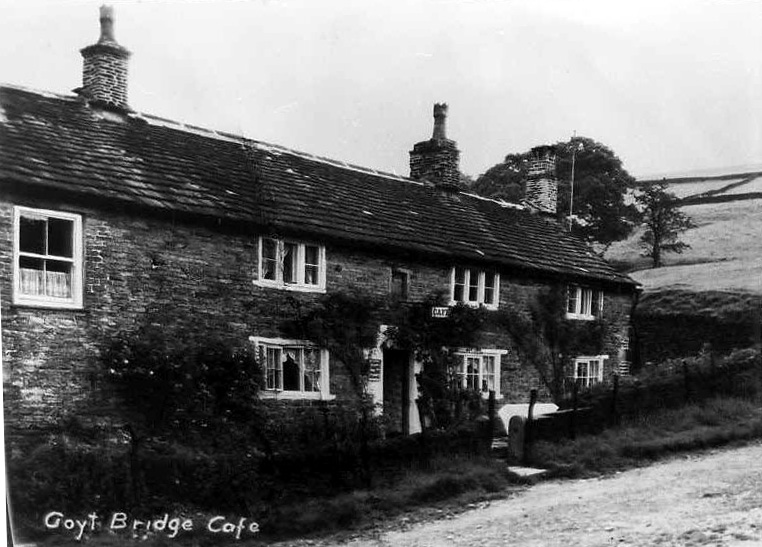
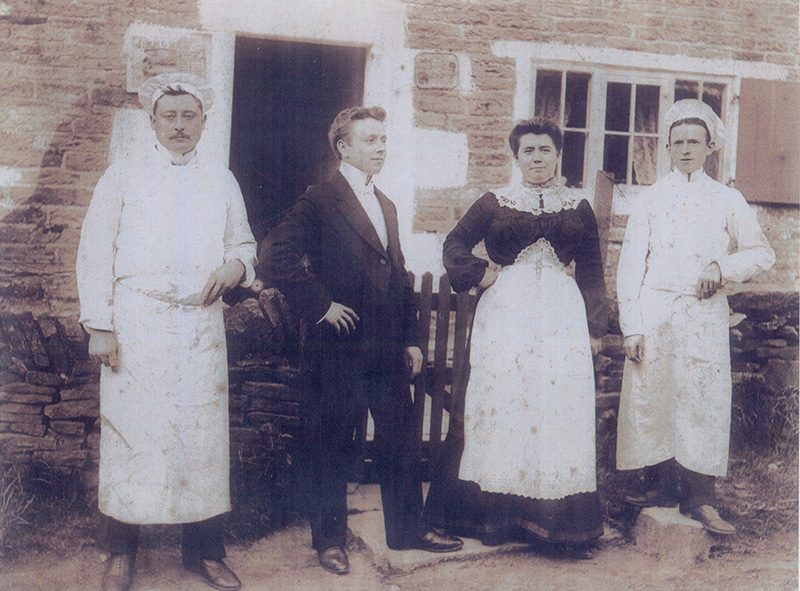
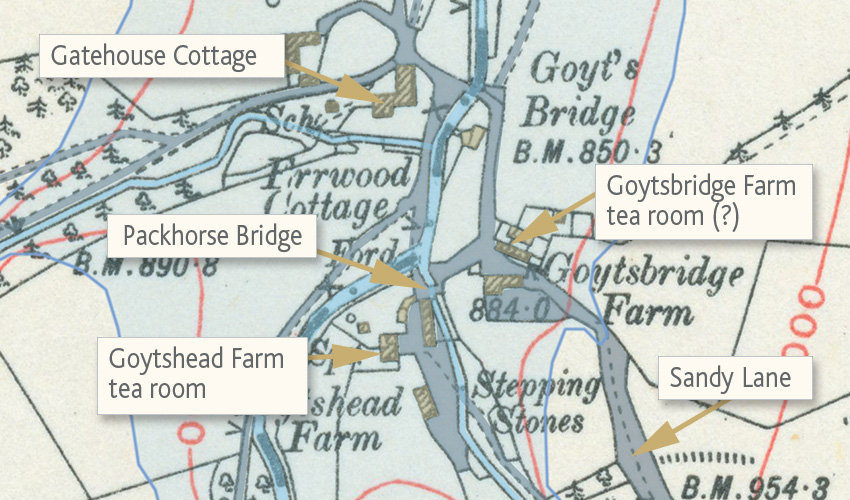
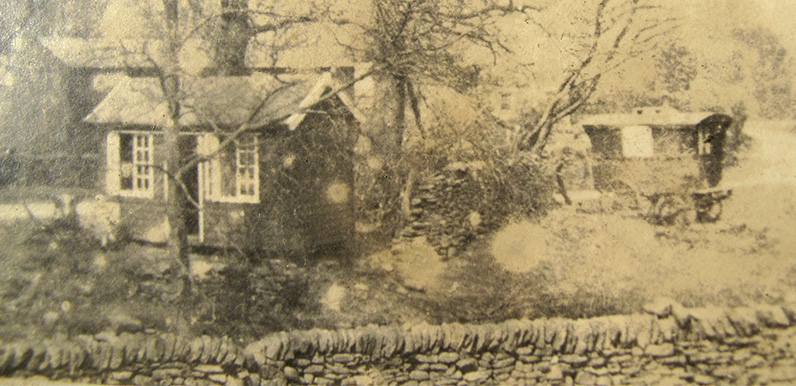
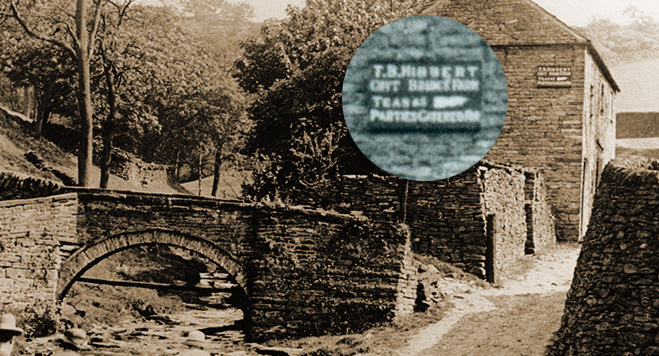

I see Goyt Bridge Farm and after the word parties, “Catered For”. Re the arrow; could it be there to alert people to the right of the building to gain entry? Just a thought!